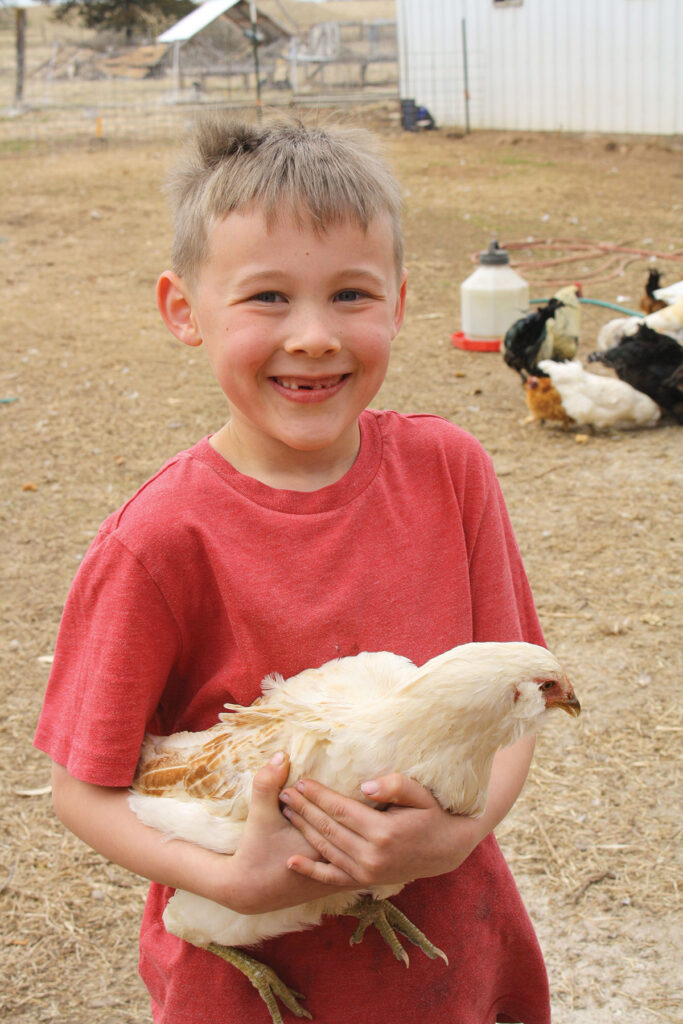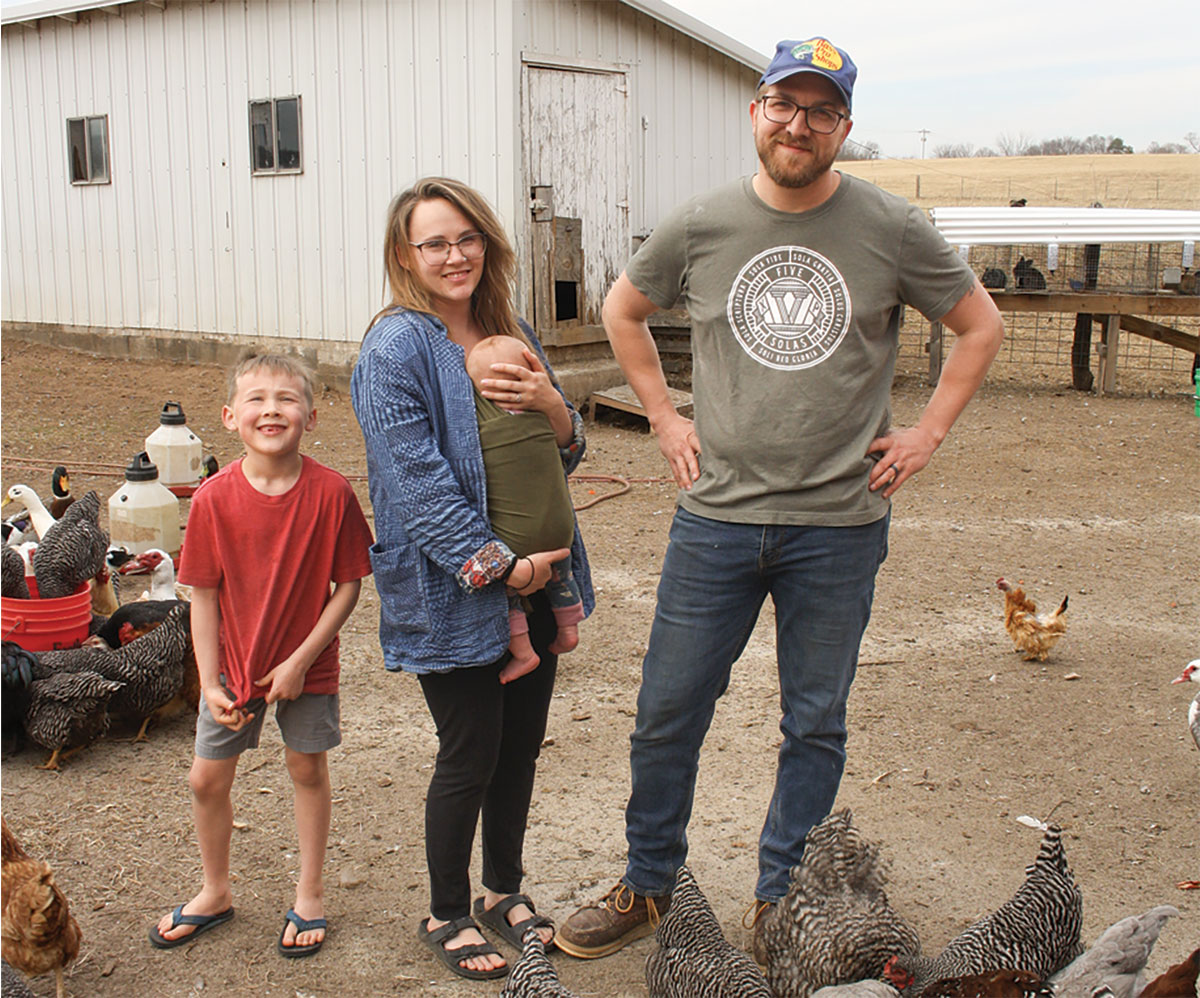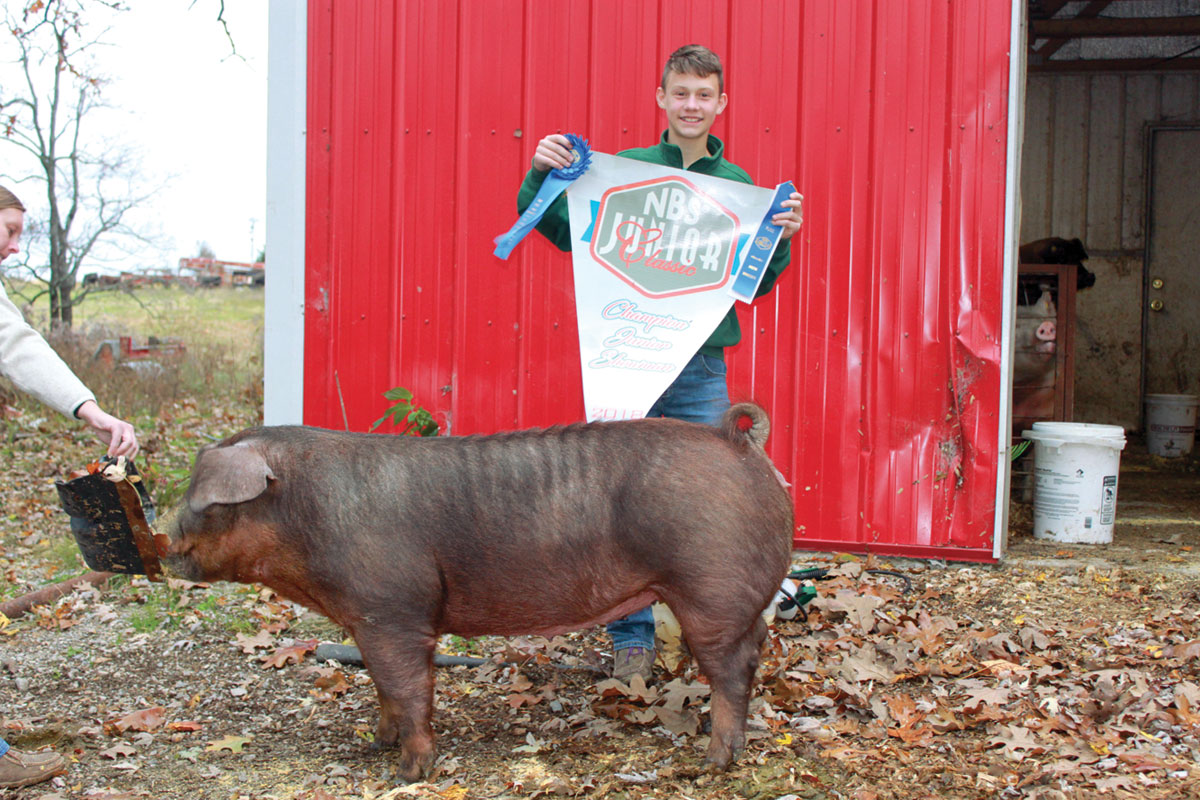
Pasture-based poultry operation wants to share more than eggs and meat with customers
FAIR GROVE, MO. – Growing up outside of Fair Grove, Mo., Ian Gehris was sent on many errands to the farm across the road, where he would pick up tomatoes, cantaloupe and other items grown by Don and Betty Fesperman.
As the saying goes, time marches on. Ian went to college, got married, started a family, and settled on 3 acres in the Marshfield, Mo., area, where they raised a few chickens.
After Don and Betty passed away, the farm went up for auction. Ian and his wife Ariel decided to try to buy it, never expecting they would be the highest bidder.
When the gavel fell, however, the Gehrises were the new owners of the 35-acre farm and the beginning of Gehris Farms.
The family is making the most of the added land by incorporating multi-species in their operation, focusing primarily on pasture-raised poultry.
“We wanted to take control of our food that was economically viable and something we could handle,” Ian said. “Like most people, the gateway animal is always a couple of egg layers.”
“If told me we needed 20 chickens, then 40 it is,” Ariel added with a laugh.
There are several parts to the poultry side of the farm.
“Ariel has her goals with her flock and her funny chickens,” Ian explained. “I’m more of a data and numbers guy, and also how I can best manage it. I think Joel Salatin said if you are going out to feed 10 chickens, there’s really no difference in 100 chickens.”
The family plans to raise around 1,000 Cornish-cross meat birds this year, which are the primary product of the farm.
“We do them in batches of 200 to 300 at a time,” Ian said. “We don’t have a certain method we think is right or perfect, especially as the weather changes, but typically we give them a Salatin-style pen with the option to leave it and give them a 40-by-40 walkway.
“There’s a notion that all you need is a 14-by-14 pen, and you can throw 70 birds in there. That’s a lot of birds, and they really burn it up. If I can’t get out there to move them one day, they have a 40-by-40 area, and they will be fine.”
Cornish-cross chicks come to Gehris Farms each spring as 1- or 2-day-old chicks, then are processed about two months later. Customers can buy shares of the bird groups, ranging from six chickens for a mini-share to a full-share of 36.
Because they process the birds on the farm, Ian and Ariel can connect directly with their customers, showing them how their meat is raised, handled and processed.
“It gives us the option to expose them to things or simply share a recipe,” Ian said. “We want to get folks out here on the farm, show them what we have going on, and let kids chase the chickens. With the share program, people come out, hang out a bit, and that makes us a little more reliable customer.”

The Gehrises also raise holiday turkeys each year. However, they hope to add to the turkey market with geese and duck this year.
“We are trying to bet against the rising grain prices, but the mountain to climb is showing the consumer how to eat and prepare it,” Ian said. “It would require us to buy less feed and have less cost, but we have to train or encourage the consumer base to try it.”
The laying operation is a combination of breeds. Ian calls them the “pretty” chickens, which offer eggs of varying color and size, but they also have productive laying breeds, such as Barred Rocks and Cinnamon Queens.
In the spring, layers are taken to mobile laying coops and put to pasture. There they help spread the manure of the cattle that graze the land the family leases to a local cattle producer and dethatch the grass.
“The eggs, for us, are a stand-alone enterprise,” Ian said. “It’s just a way to get to know people because that is a very entry-level product.”
Egg production is more about the quality of the land than making money.
“It’s the pest management, the dethatching, the spreading of manure; the eggs are a byproduct,” Ian explained. “We have a burden of abundance because we have all these eggs, but I will take that burden any day.”
Finally, there is Ariel’s breeding project.
“They have all been pretty much free-range, doing their thing, to get our numbers up,” Ariel said. “This year, we have some same-breed pairs, so we are going to see where that goes. Also, I may like the color of this breed, but I like the size of this breed, so I will put them together and see what happens.
One mix, a Silver Duckwing Phoenix Bantam line they have produced, is very broody, which has taken up the slack for those birds that might not be as “parental.” The couple will also introduce chicken eggs to their Muscovy ducks because of the broody nature of that species.
“One of our plans this year is to bring in 50 Runner ducks,” Ian said. “That will help us because a Runner duck will lay an egg just where it happens. We will have a pen of Muscovy ladies and start putting eggs in there so we can brood them and get this self-sustaining duck program.”
All birds at Gehris Farms are pasture-raised and organically fed produced at Peterson Organic Feeds in Mountain Grove, Mo.
“The meat birds do very well on it,” Ian said. “It’s not corn-free, it’s not soy-free. The important thing for us is to be productive, and to be productive; you have to be good stewards. The Cornish-cross is designed to grow on corn and soy. I would love it if one of my kids got the love for farming and spend the next 30 years trying to develop the next good, large broiler chicken that gets 50 percent of its calories from pasture, then from corn or soy, maybe adding oats, wheat and others.”
Because of feed costs, they are considering splitting their birds into organically-fed and conventionally-fed groups.
“The output and performance will be the same. We don’t want to ask people to buy a $30 chicken,” Ian said. “That will help us tap into a consumer base that we might not have had. It also puts us at a better price point. They will still be pasture-raised, just fed conventionally. Last year, the family took a break from poultry sales as they awaited the arrival of their daughter, Phoebe, and Ian was busy with his day job in engineering and the installation of industrial food equipment. However, the family, including young sons Thomas and Matthew is gearing up for this season’s production.
In addition to their poultry operation, they also have a small flock of primarily Soay sheep, with some Katahdin blended in. Ian said the flock was initially planned for family use, but as it grows, they are looking at offering lamb to customers or offering ewes for sale to follow breeder.
The goal of Gehris Farms is simple: produce good food and sharing it with others.
“We are so disconnected from where our food comes from, and getting everything from the grocery store has been only an experiment in the last 100 years,” Ian said. “By getting people out here, we can show them how to get started, and the rest will follow.”







